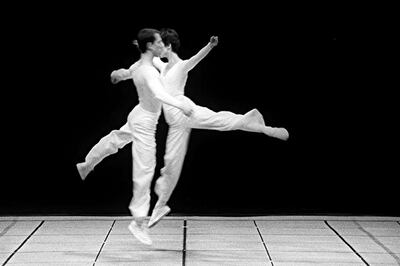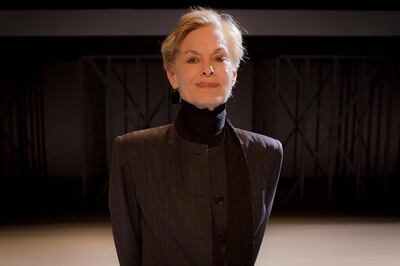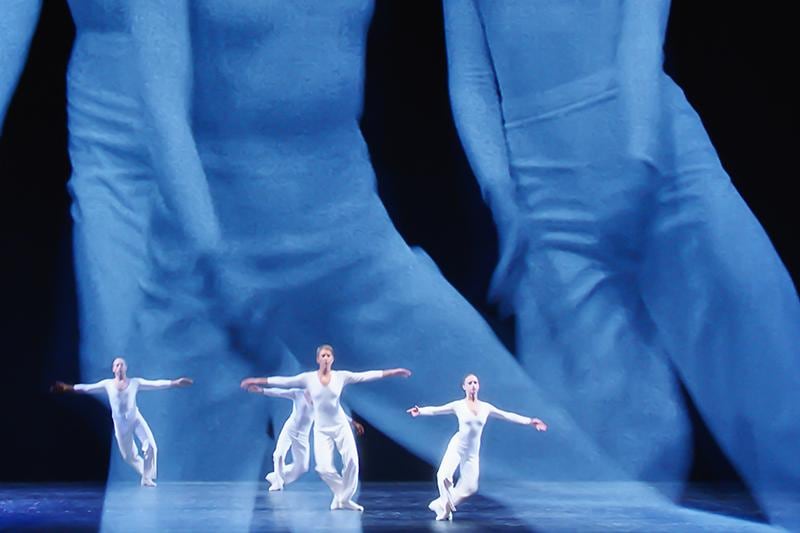Ever since performance and dance works have become part of the canon of visual art, museum curators and academics have struggled with how to answer a basic question: how do you actually see the work, after its initial presentation? A painting can be acquired and hung on a wall for viewers to admire, and can be easily reproduced for students. But when you're watching documentation of a performance, are you watching the film or the dance?
This has become a particular problem in recent years, as performance – the medium in which some of the most exciting artworks of the 1970s were made – is now being historicised in institutions. Tate Modern, for example, opened new spaces in 2012 to hold dance and performance works, reconfiguring the oil tanks of its former power plant building. The London museum inaugurated the galleries – named Tate Tanks – with a two-day symposium on how performance, the “art of the present tense”, could be responsibly brought into the institution.
Bringing past and present together
Next week, one of the seminal works of postmodern dance – and one for which "seminal" is no exaggeration – comes to Abu Dhabi for two shows at the New York University Abu Dhabi Arts Centre. Titled Dance, it is a collaboration between choreographer Lucinda Childs, composer Philip Glass and artist Sol LeWitt. Eleven performers move across the stage in repeated sequences while in front of them, a gauzy scrim shows the projection of LeWitt's film of the original dancers (including Childs herself). They perform the same work, floating like ghosts in front of the current company in a beautiful and moving synchronicity.
Forty years on, what has also become extraordinary about Dance is how it anticipates the problem of historicising performance, both literally and in terms of its feeling. Propelled forward by Glass's pulsing composition, two currents compete in the piece: the dancers' bodies live on stage, with the sound of their breath and their landing feet, and the otherworldly images of the dancers towering over them, echoing their steps. The work is split in two: film and dance, past and present.
Watching it, one feels faced with the recognition of time’s passing, and increasingly in a concrete way: LeWitt’s film is not just of some other era, but of a particular time that has become mythical in the annals of artistic production. “People get it right away,” says Childs of the work. “That the concept of the piece is the dancers on stage are more or less identical. But this is clearly another time, when you see the film – a flashback to the 1970s.”

The choreographer, who received a lifetime honour last year from the American Dance Festival, was working in New York City in the 1960s and 1970s when artists, choreographers, composers and filmmakers came together to apply shared ideas to different media: what could minimalism look like in music, dance, art? This was epitomised by the Judson Dance Theatre, a collective housed in a former church in Greenwich Village in the early 1960s that Childs participated in, and whose ideas she continued to explore throughout the following decades.
“Now we’re recognised as pioneers in mixed media – we didn’t even call it that then. We were just making stuff,” she says. “Now it is very much a thing that people are doing with performance.”
The story behind the dance
Childs studied at the liberal arts college Sarah Lawrence, about 20 minutes outside of New York. Later, at Connecticut College, she found herself the reluctant student of Martha Graham, though her allegiances were with Merce Cunningham, whose belief in the denial of artistic subjectivity were the very opposite of Graham’s expressive choreographies. Cunningham was a key influence on the Judson Dance Theatre, and with his partner Robert Rauschenberg, influenced the rule-based explorations of the choreographers and helped foment the workshop’s commitment to multi-disciplinary collaboration.
_____________________
Read more:
[ NYUAD show on the 1950s ‘Downtown’ New York art scene is a fairy tale story ]
[ An exhibition in Dubai that leaves you in a New York state of mind ]
[ Review: Meredith Monk a testament to the beauty of the human voice ]
_____________________
Dance came three years after Childs's high-profile partnership with Glass on the opera Einstein on the Beach. They began working on a dance project together and approached LeWitt to do the decor. It was his idea not to make one of his signature wall pieces or structures, but to create a film of the dancers themselves.
“Sol LeWitt’s editing was amazing,” Childs recalls. “Anyone can make a film of dancers, but how he connected with the movement was extraordinary.”
“We worked in a film studio,” she continues about the film, which remains LeWitt’s only work done in moving image. “He showed camera angles that were overhead, in the back and front – nothing that could be done in my rehearsal studio at that time. The filming was done on 35mm black and white, which has now transferred to high-definition video. The film is too fragile to be used anymore.”

Dance is now performed by companies other than the Lucinda Childs Dance Company, and they each shoot a new version of the film with their dancers when it enters into their repertory. The version that will be performed at the NYUAD Arts Centre this week will show the original LeWitt film, and comes at the end of a revival of the work. After these performances, the company, which has worked together for ten years, will take a break.
Excitement around the Arts Centre
This is the second time the NYUAD Arts Centre has revisited work by Judson dancers. Last year, they brought over Trisha Brown's company to perform a suite of her best-known work from that period, such as Roof Piece (1971), originally performed upon the roofs of Manhattan; here it stretched out across the breadth of the NYUAD campus. Childs was likewise interested in taking her work away from the theatre space; Dance was the first work she wrote for the proscenium stage. The Kronos Quartet, who were formed in Seattle in 1973, and the extraordinary polymath Meredith Monk, who began composing and choreographing work in New York in the 1960s, have both appeared on the Arts Centre's roster.
Part of the excitement around the Arts Centre's showing these works is that – though seminal – many of them are rarely seen. Roof Piece is iconic but seldom performed – mostly for health and safety concerns about the dancers balancing on rooftops. In other cases, visual arts institutions find it difficult to raise the funds or to guarantee the audience needed to stage live performances of the works. In an almost delicious game of patience in this on-demand world, interested audiences must simply wait for these works to enter, or re-enter, companies' repertories.
For the Arts Centre, a historical focus has been delibrate. Bill Bragin, the Arts Centre's programmer, says that he has "intentionally included a number of landmark works and artists in order in introduce different visions of approaches to dance." But, he cautions, "These aren't selected for purely pedagogical reasons. Dance is an extraordinarily joyous work."
Dance will be performed at the NYUAD Arts Centre on Wednesday and Thursday. Lucinda Childs will be in conversation at 7pm on Sept 4 about reviving historical works in the present day






